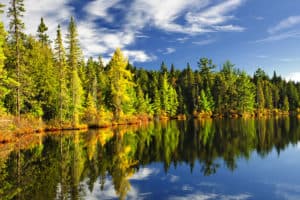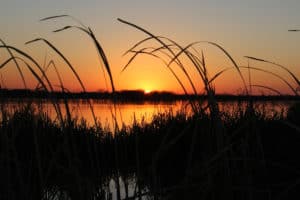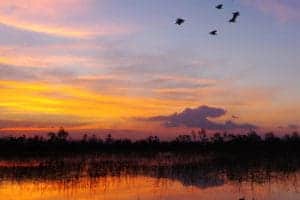When buyers acquire recreational property, they often want to know two things: How do I maximize the property’s timber value? And how can I improve the quality of wildlife on the property?
The good news is that these two goals don’t have to be mutually exclusive. With that in mind, here are some tips for formulating a timber management plan that can also benefit the wildlife on your property.
- As a first step, it’s important to seek out professional help in formulating a timber management plan. Recreational real estate brokers often either have a registered forester on staff, or can put you in touch with one. For while many states offer help with specific management programs, such as for controlled burns, it can be a tremendous help to work with an expert to create your overall plan.
- Make sure you know what your goals are for the property. Are you looking to maximize the property’s timber investment potential? Or do you want to get the highest-quality wildlife you can? Or both? In some cases, you may have to give a bit on timber investment goals for a property to reach its full recreational potential, or vice versa.
- Controlled burns are an affordable way to both improve growth and to help wildlife. Such burns can remove hazardous buildup of debris, and can encourage growth of understory, which can be good forage for such wildlife as deer and turkey. Also, this is a relatively low-cost method of management. In Arkansas, where we do business, doing such a burn can cost as little as $30 an acre.
- Make sure you protect the water sources for your wildlife. Clear debris that might be blocking creeks and streams, and guard against erosion that can impact water flow. If needed, consider building a reservoir to collect water. But before you do anything, make sure you also consider water sources on nearby properties. There’s no need to spend a lot of money to create water sources on your property if wildlife can get it nearby with no hassle.
- Now is the time to be thinking about what wildlife will need to thrive in the fall. For example, if deer have trampled a significant amount of your grass and food sources this summer, you may want to consider planting supplemental food plots. Food plots can be simple or quite elaborate – consult with experts to balance your goals with your budget requirements.
- If you are looking at timber management from an investment perspective, set realistic expectations for cash flow. You might want to mix timber that gives your property both short- and long-term cash revenue. And know that if you are picking a property primarily for its recreational qualities, it may not have the same revenue potential as a property you chose primarily for timber investment.
- Update your timber management plan periodically. Timber markets can change, and there’s also a possibility that a natural event like a significant storm could alter your property and what’s needed to improve it. This updating might be done every year or up to every five years, depending on the property and your goals.
Michael Marter is a Senior Forester and real estate agent for Davis DuBose Knight Forestry & Real Estate, part of the Potlatch Preferred Broker network. With experience in both forestry and recreational real estate, he specializes in helping property owners, buyers and sellers throughout the state of Arkansas.
This content may not be used or reproduced in any manner whatsoever, in part or in whole, without written permission of LANDTHINK. Use of this content without permission is a violation of federal copyright law. The articles, posts, comments, opinions and information provided by LANDTHINK are for informational and research purposes only and DOES NOT substitute or coincide with the advice of an attorney, accountant, real estate broker or any other licensed real estate professional. LANDTHINK strongly advises visitors and readers to seek their own professional guidance and advice related to buying, investing in or selling real estate.










Add Comment